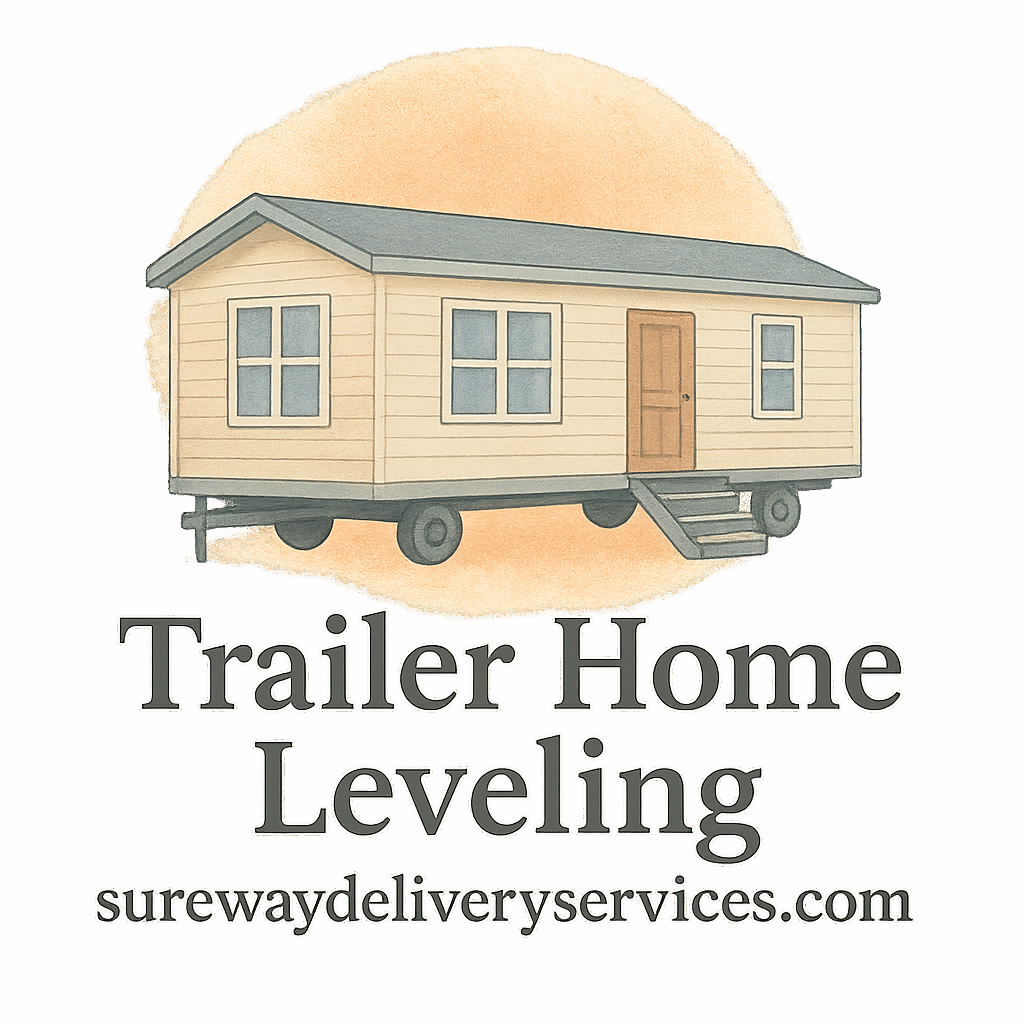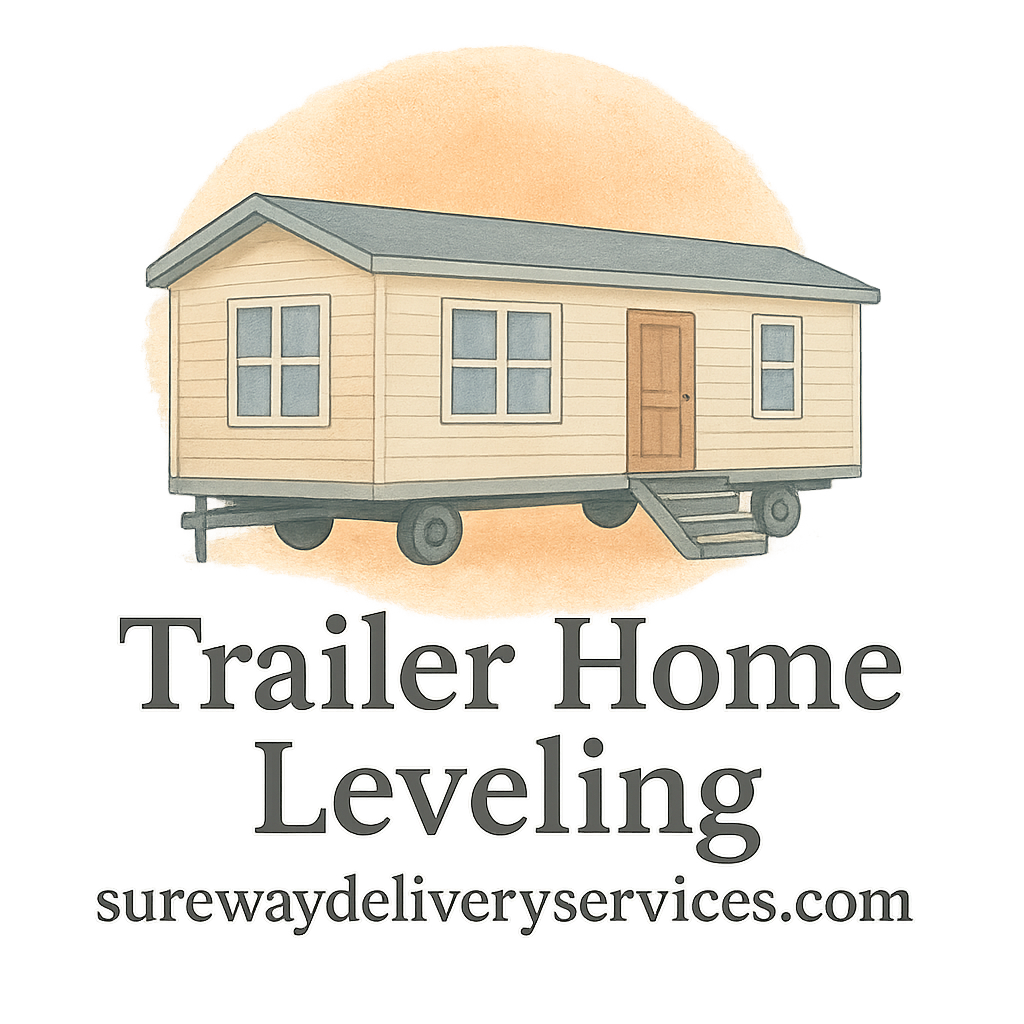Introduction
Let’s face it—nobody likes living in a crooked home. Whether it’s a tilted floor, stuck doors, or wobbly furniture, an unlevel trailer home is a nightmare. That’s where home leveling comes in. But here’s the kicker: not all leveling is created equal.
In this article, we’ll break down the 7 key differences between permanent and temporary home leveling, so you know exactly which one suits your lifestyle and trailer setup. We’ll also guide you through real-life scenarios, internal tips, and expert-level advice from the pros at Trailer Home Leveling.
1. Purpose of the Leveling Method
Permanent Leveling: Built to Last
Permanent leveling is designed with stability in mind. It’s a foundational solution, meant to keep your mobile or manufactured home secure and balanced for the long haul. It’s often part of major renovations or long-term installations.
Temporary Leveling: A Short-Term Fix
On the flip side, temporary leveling is for situations where mobility or budget is key. It’s perfect if you’re frequently on the move or just need a quick fix before a bigger project down the line.
Want to learn more about leveling basics? Check out our guide on Home Leveling Introduction.
2. Longevity and Durability
Permanent Leveling: Decades of Stability
If done right, permanent home leveling can last 20 years or more. It’s a “do it once, do it right” kind of solution, especially when you hire a reputable trailer leveling service.
Temporary Leveling: Months to a Few Years
Temporary leveling doesn’t last forever. Expect it to hold up for a season or a couple of years, tops—especially in areas with shifting soil or frequent weather changes. It’s also more vulnerable to settling.
For regular inspections, visit our maintenance checklist.
3. Materials and Techniques Used
Permanent Leveling: Heavy-Duty Tools and Foundations
We’re talking steel piers, concrete blocks, and sometimes even helical anchors. These are installed by pros using methods covered in techniques and methods.
Temporary Leveling: Portable Jacks and Shims
If you’ve got a bottle jack and some wood shims, you’re halfway there. Temporary methods often involve tools found in any handyman’s garage. They’re affordable, but they don’t offer long-term peace of mind.
Also explore: Tools Used in Trailer Leveling

4. Cost Implications
Permanent: Higher Upfront, Better Investment
Yes, permanent trailer leveling will cost more initially, but you’ll save big on repairs and re-leveling in the future. Learn how to budget smart in our cost and budgeting guide.
Explore: Cost Tips and Price Breakdown | Avoid Getting Overcharged
Temporary: Lower Cost, Frequent Maintenance
You might spend a couple of hundred bucks upfront, but expect to redo the work often. Over time, these little fixes add up.
5. Installation Time and Disruption
Permanent: Longer Installation, More Disruption
Permanent leveling might take a day or two depending on the home’s size and the terrain. It might involve lifting, digging, and securing—so get ready for some noise and disruption.
Temporary: Quick and Convenient
Temporary methods can be done in a couple of hours. If you’re in a rush or have a surprise sagging issue, this is the fastest fix.
Pro Tip: Always refer to our Annual Leveling Checklist.
6. Maintenance Requirements
Permanent: Minimal Ongoing Maintenance
Once installed, you might only need an inspection every few years—ideally annually. Bookmark our maintenance section for regular upkeep strategies.
Temporary: Regular Checks and Adjustments
Because the setup isn’t as robust, you’ll need to re-level often, especially after storms, moves, or seasonal changes.
Explore: Inspection Tips
7. Suitability for Different Trailer Homes
Permanent: Ideal for Settled or Older Units
If your trailer home is stationary, aging, or part of a permanent residence, opt for permanent leveling. It’s safer and future-proof.
Temporary: Perfect for Travel or Seasonal Living
For RVs, tiny homes, or vacation trailers, temporary leveling does the trick. Quick to install, easy to adjust.
Discover more on Trailer Details and Trailer Types.
How to Choose Between the Two
Consider Your Budget
A tight budget might push you toward a temporary fix—but remember, permanent solutions often pay off in the long run.
Evaluate Long-Term Goals
Are you living here forever or just passing through? Your answer should guide your leveling decision.
Think About Location and Use
Rural properties with soft soil? Go permanent. A summer cabin? Temporary might be enough.
Check: Trailer Tips
Key Signs Your Leveling Needs an Upgrade
- Doors and windows sticking
- Floors sagging or creaking
- Cracks in walls or ceiling
- Water pooling under the home
- Leaning or shifting appearance
These are red flags. Browse more Signs You Need Leveling
Common Tools Used in Both Methods
- Hydraulic jacks
- Laser levels
- Concrete blocks
- Wood shims
- Spirit levels
Check out our complete list of Trailer Leveling Tools
Real-Life Success Stories: When Leveling Changed Everything
One homeowner in Texas shared their success story of converting their tilting trailer into a solid foundation with permanent leveling—saving them thousands on repairs and mold mitigation.
Want more confidence in your decision? Read Customer Reviews
Final Thoughts
Choosing between permanent and temporary home leveling isn’t just about cost—it’s about lifestyle, goals, and safety. Both have their place, but knowing which works best for your trailer will save you time, money, and headaches.
Whether you’re a full-time trailer dweller or a weekend adventurer, leveling is your best friend. Start smart. Level right.
Conclusion
Understanding the 7 differences between permanent and temporary home leveling helps you make an informed decision for your trailer home. From cost and durability to tools and maintenance, every factor counts.
Take control of your trailer’s future by choosing the right leveling approach. When in doubt, talk to the experts at Trailer Home Leveling. They’ve got your back—and your foundation!
FAQs
1. Is temporary leveling safe for long-term use?
Temporary leveling is safe in the short term, but not recommended for long-term stability or extreme climates.
2. How much does permanent home leveling cost?
It varies by size and location, but most projects range from $1,000 to $7,000. See our cost guide.
3. Can I do home leveling myself?
Yes, especially temporary methods. However, for permanent fixes, it’s best to hire professionals. Visit service hiring.
4. How often should I re-level my trailer home?
Temporary setups might need checking every 6–12 months. Permanent systems should be inspected annually.
5. What are signs my trailer is unlevel?
Stuck doors, sagging floors, and cracks in walls are the most common signs. See the full inspection checklist.
6. Does leveling affect plumbing and electric systems?
Absolutely. Improper leveling can disrupt both, leading to costly repairs.
7. Where can I get professional help?
Right here: TrailerHomeLeveling.com – your go-to resource for everything trailer leveling.


